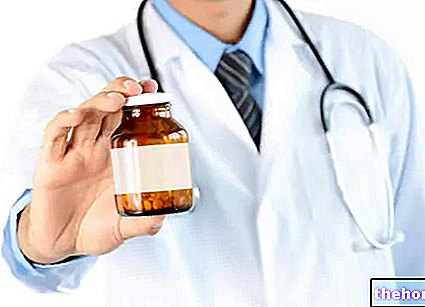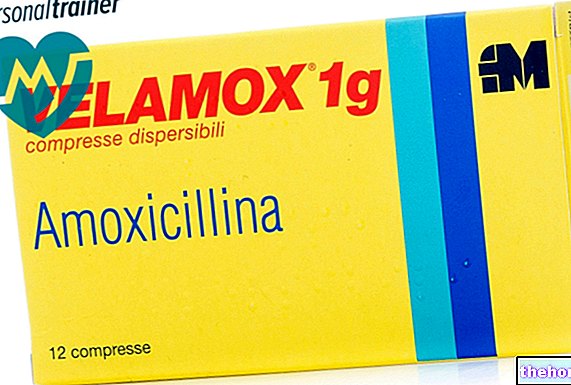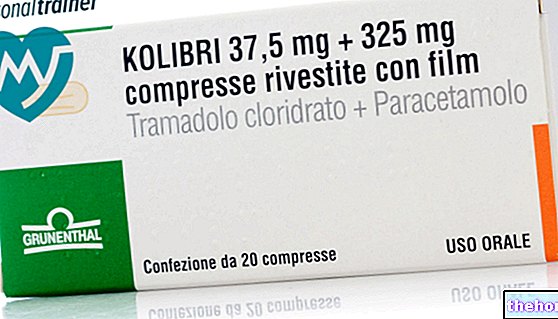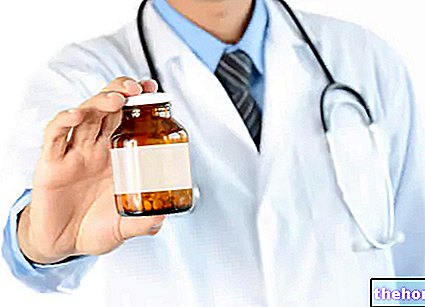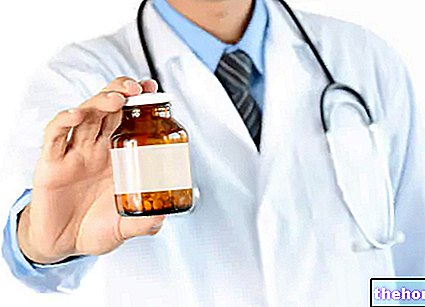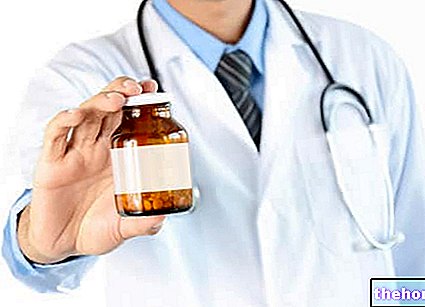Active ingredients: Cefditoren (pivoxil)
GIASION 200 mg film-coated tablets
Giasion package inserts are available for pack sizes:- GIASION 200 mg film-coated tablets
- GIASION 400 mg film-coated tablets
Indications Why is Giasion used? What is it for?
Giasion belongs to a group of antibiotics called cephalosporins, which work by inhibiting the synthesis of the cell wall of bacteria.
Giasion is used in adults to treat the following infections:
- Acute pharyngo-tonsillitis
- Acute maxillary sinusitis
- Acute exacerbation of chronic bronchitis
- Community-acquired pneumonia, mild to moderate
- Uncomplicated infections of the skin and skin structures, such as cellulitis, infected wounds, abscesses, folliculitis, impetigo and boils.
Contraindications When Giasion should not be used
Do not take Giasion:
- If you are allergic to antibiotics, essentially penicillin or any other type of beta-lactam antibiotic or any of the other ingredients of this medicine (listed in section 6).
- If you are allergic to casein, please note that this medicine contains sodium caseinate.
- If you have a disease referred to as primary carnitine deficiency.
Precautions for use What you need to know before taking Giasion
Talk to your doctor before taking Giasion:
- If you have liver and / or kidney disease.
- If you are on anticoagulant therapy.
- If you have a previous history of gastrointestinal disease, especially colitis.
- If you are receiving concomitant treatment with nephrotoxic active substances such as aminoglycoside antibiotics or potent diuretics (such as furosemide) as these combinations may have undesirable effects on kidney function and have been associated with ototoxicity.
Consult your doctor if you experience any of the following during treatment:
- If you experience any allergic reactions during treatment such as: itching, redness, rash, swelling, or difficulty in breathing.
- If you have diarrhea while taking this medicine or after finishing treatment.
Interactions Which drugs or foods can modify the effect of Giasion
Tell your doctor or pharmacist if you are taking, have recently taken or might take any other medicines.
It is recommended to leave a period of at least 2 hours between taking antacids and Giasion.
If you take Giasion with probenecid the blood levels of cefditoren increase.
It is recommended not to take Giasion with intravenous famotidine as this may make it difficult to reach the appropriate plasma levels.
Warnings It is important to know that:
As with other antibiotics, prolonged treatment with Giasion can cause an overgrowth of non-sensitive microorganisms which may require discontinuation of treatment and administration of appropriate therapy.
Treatment with Giasion can interfere with the results of some analytical tests, it can give false positives in:
- direct Coombs test
- determination of glucose in urine.
A false negative result can show up for:
- determination of glucose in plasma or blood.
Pregnancy and breastfeeding
If you are pregnant or breast-feeding, think you may be pregnant or are planning to have a baby, ask your doctor or pharmacist for advice before taking this medicine. It is recommended not to take Giasion during pregnancy, or while breastfeeding.
Driving and using machines
Giasion may cause dizziness and sleepiness which may affect the ability to drive or use tools or machines.
Dosage and method of use How to use Giasion: Dosage
Always take this medicine exactly as your doctor has told you. If in doubt, consult your doctor or pharmacist. Don't forget to take your medicine. Your doctor will tell you the length of the course of treatment with Giasion.
The tablets should be swallowed whole, with a sufficient amount of water (one glass of water). The tablets should be taken with meals.
The recommended dose and frequency of administration of this medicine is indicated below:
Adults and adolescents (over 12 years)
- Acute pharyngo-tonsillitis: 1 tablet (200 mg of cefditoren) every 12 hours for 10 days.
- Acute maxillary sinusitis: 1 tablet (200 mg of cefditoren) every 12 hours for 10 days.
- Acute exacerbation of chronic bronchitis: 1 tablet (200 mg of cefditoren) every 12 hours for 5 days.
- Community-acquired pneumonia:
- in mild cases: 1 tablet (200 mg of cefditoren) every 12 hours for 14 days
- in moderate cases: 2 tablets (400 mg of cefditoren) every 12 hours for 14 days
- Uncomplicated infections of the skin or skin structures: 1 tablet (200 mg of cefditoren) every 12 hours for 10 days.
Use in children
The use of Giasion has not been studied in patients under 12 years of age, therefore its use is not indicated.
Senior citizens
No dose adjustment is necessary in the elderly, except in the case of severe renal and / or hepatic insufficiency.
Patients with renal insufficiency
No dose adjustment is necessary for patients with mild renal impairment.
In patients with moderate renal insufficiency, the total daily dose should not exceed the dose of one tablet (200 mg of cefditoren) every twelve hours. In patients with severe renal insufficiency, a single dose of 1 tablet (200 mg of cefditoren) per day is recommended. The recommended dose has not been established in patients undergoing dialysis.
Patients with hepatic insufficiency
No dose adjustments are required in patients with mild to moderate hepatic impairment. In the case of severe hepatic insufficiency, no data are available to establish a recommended dose.
If you forget to take Giasion
If you forget to take a dose, take the next one as soon as possible and then continue as usual according to your treatment plan. Do not take a double dose to make up for a forgotten individual dose.
If you stop taking Giasion
Complete the full course of treatment as there is a risk of the disease returning.
Overdose What to do if you have taken too much Giasion
If you take more Giasion than recommended, tell your doctor or pharmacist immediately.
Side Effects What are the side effects of Giasion
Like all medicines, this medicine can cause side effects, although not everybody gets them. The undesirable effects that can occur are mainly related to the gastrointestinal system.
Very common (more than 1 user in 10): diarrhea.
Common (1 to 10 users in 100): headache, nausea, abdominal pain, indigestion, vaginal infection.
Uncommon (1 to 10 users in 1000):
- Fungal infections
- Anorexia
- Nervousness, dizziness and sleep disturbances
- Pharyngitis, rhinitis and sinusitis
- Constipation, flatulence, vomiting, oral candidiasis, belching, dry mouth and loss of taste
- Abnormal liver function
- Skin rash, itching and hives
- Vaginal inflammation and vaginal discharge
- Fever, weakness and sweating
- Changes in blood cell counts (leukopenia, thrombocytosis), changes in liver function tests (elevated ALT levels) have been observed.
Rare (1 to 10 users in 10,000):
- Hemolytic anemia and alteration of the lymphatic ganglia
- Dehydration
- Dementia, depersonalization, emotional weakness, euphoria, hallucinations, increased libido
- Memory loss, lack of coordination, hypertonia, meningitis and tremor
- Photosensitivity, loss of visual acuity, eye pain and inflammation of the eyelids
- Tinnitus
- Abnormal heart rhythm, heart failure and fainting
- Lowering of pressure
- Asthma
- Mouth ulcers, haemorrhagic colitis, stomatitis, ulcerative colitis, gastrointestinal haemorrhage, hiccups, inflammation and discoloration of the tongue, Clostridium difficile associated diarrhea
- Acne, alopecia, eczema, exfoliative dermatitis (cracking and peeling of the skin) and herpes simplex
- Muscular pain
- Pain on urination, kidney inflammation, altered frequency to urinate, incontinence and urinary infection
- Breast pain, menstrual disorders and erectile dysfunction
- Bad body odor and chills
- Changes in blood cell counts (eosinophilia, neutropenia, thrombocytopenia), coagulation disturbances (lengthening of clotting times, reduction in thromboplastin time, alteration of platelets), changes in liver function tests (elevated AST levels) have been observed , alkaline phosphatase), changes in the values of some blood components (hyperglycaemia, hypokalaemia, bilirubinaemia, elevated LDH, hypoproteinemia, increased creatinine) or urine (albuminuria).
Not known
- Pneumonia
- Stevens-Johnson syndrome (blistering and erosion of the skin and mucous membranes)
- Redness of the skin
- Toxic epidermal necrolysis (a severe form of Stevens-Johnson syndrome followed by sore skin and peeling of the upper layer of the skin)
- Acute renal failure
- Anaphylactic shock
- Serum sickness (a delayed allergic skin reaction)
- Decreased number of cells in the blood (agranulocytosis)
- Decreased carnitine values in the blood
- Cholestasis (the flow of bile from the liver is blocked)
- Aplastic anemia (decreased number of blood cells)
- Liver damage
- Hepatitis
Reporting of side effects
If you get any side effects, talk to your doctor or pharmacist. This includes any possible side effects not listed in this leaflet. You can also report side effects directly via the national reporting system at: www.agenziafarmaco.gov.it/it/responsabili. By reporting side effects you can help provide more information on the safety of this medicine.
Expiry and Retention
Keep this medicine out of the sight and reach of children.
Store in the original packaging.
Do not store above 30 ° C.
Do not use this medicine after the expiry date which is stated on the carton. The expiry date refers to the last day of that month.
Do not throw any medicines via wastewater or household waste. Ask your pharmacist how to throw away medicines you no longer use. This will help protect the environment.
Deadline "> Other information
What Giasion 200 mg film-coated tablets contains
- The active ingredient is cefditoren. Each tablet contains 200 mg of cefditoren (as cefditoren pivoxil).
- The other components are
- core: Sodium caseinate, Croscarmellose sodium, Mannitol E421, Sodium tripolyphosphate and Magnesium stearate;
- coating: Opadry Y-1-7000 (Hypromellose, Titanium dioxide E 171, Macrogol 400) and Carnauba wax;
- OPACODE S-1-20986 blue ink: Shellac, Brilliant blue lacquer, Titanium dioxide E 171, Propylene glycol and Concentrated ammonia solution.
Description of what Giasion looks like and contents of the pack
Giasion 200 mg are film-coated tablets. Each pack contains 16, 20 or 500 tablets.
Not all pack sizes may be marketed.
Source Package Leaflet: AIFA (Italian Medicines Agency). Content published in January 2016. The information present may not be up-to-date.
To have access to the most up-to-date version, it is advisable to access the AIFA (Italian Medicines Agency) website. Disclaimer and useful information.
01.0 NAME OF THE MEDICINAL PRODUCT -
GIASION TABLETS COATED WITH FILM
02.0 QUALITATIVE AND QUANTITATIVE COMPOSITION -
Giasion 200 mg film-coated tablets.
Each film-coated tablet contains 200 mg of cefditoren equivalent to 245.1 mg of cefditoren pivoxil.
Giasion 400 mg film-coated tablets.
Each film-coated tablet contains 400 mg of cefditoren equivalent to 490.2 mg of cefditoren pivoxil.
Excipient with known effect: 26.2 mg of sodium per tablet
For the full list of excipients, see section 6.1.
03.0 PHARMACEUTICAL FORM -
Film-coated tablets.
White elliptical tablets with blue "TMF" logo imprinted on one side.
04.0 CLINICAL INFORMATION -
04.1 Therapeutic indications -
Giasion is indicated in the treatment of the following infections caused by susceptible microorganisms:
(see section 5.1 Pharmacodynamic Properties):
• Acute pharyngo-tonsillitis
• Acute maxillary sinusitis
• Acute exacerbation of chronic bronchitis
• Community-acquired mild to moderate pneumonia
• Uncomplicated infections of the skin and skin structures, such as cellulitis, infected wounds, abscesses, folliculitis, impetigo and boils.
Official guidelines regarding the appropriate use of antibacterial agents should be considered.
04.2 Posology and method of administration -
The recommended dose depends on the severity of the infection, the patient's condition and the microorganisms potentially involved.
Dosage
Adults and adolescents (over 12 years of age)
• Acute pharyngotonsillitis: 200 mg of cefditoren every 12 hours for 10 days.
• Acute maxillary sinusitis: 200 mg of cefditoren every 12 hours for 10 days.
• Acute exacerbation of chronic bronchitis: 200 mg of cefditoren every 12 hours for 5 days
• Community-acquired pneumonia:
- In mild cases: 200 mg of cefditoren every 12 hours for 14 days
- In moderate cases: 400 mg of cefditoren every 12 hours for 14 days.
• Uncomplicated infections of the skin and skin structures: 200 mg of cefditoren every 12 hours for 10 days.
Pediatric population
Giasion is not recommended for use in children under 12. Experience in children is limited.
Senior citizens
No dose adjustment is necessary in the elderly except in cases of severe renal and / or hepatic insufficiency.
Kidney failure
No dose adjustment is necessary for patients with mild renal impairment. In patients with moderate renal insufficiency (creatinine clearance 30-50 ml / min), the total daily dose should not exceed 200 mg of cefditoren every 12 hours. In patients with severe renal insufficiency (creatinine clearance dialysis (see sections 4.4. Special warnings and precautions for use and 5.2 Pharmacokinetic properties).
Hepatic insufficiency
No dose adjustments are required in patients with mild (Child-Pugh A) to moderate (Child-Pugh B) hepatic impairment. In case of severe hepatic insufficiency (Child-Pugh C) no data are available to establish a recommended dose (see section 5.2 Pharmacokinetic properties).
Method of administration
The tablets should be swallowed whole with a sufficient amount of water. The tablets should be taken with meals.
04.3 Contraindications -
• Hypersensitivity to the active substance, to any other cephalosporin or to any of the excipients listed in section 6.1. For patients who are hypersensitive to casein it should be emphasized that the product contains sodium caseinate.
• Previous immediate and / or severe hypersensitivity reaction to penicillin or another type of beta-lactam active substance.
• As with other compounds that produce pivalate, cefditoren pivoxil is contraindicated in cases of primary carnitine deficiency.
04.4 Special warnings and appropriate precautions for use -
Before initiating therapy with Giasion, a thorough investigation should be made to determine if the patient has had previous hypersensitivity reactions to cefditoren, cephalosporins, penicillins, or other beta-lactam active substances.
Cefditoren should be administered with caution to patients who have had any other type of hypersensitivity reaction to penicillin or any other beta-lactam active substance.
Diarrhea associated with antibiotic use, colitis and pseudomembranous colitis have all been reported associated with the use of cefditoren.These diagnoses should be considered in any patient who develops diarrhea during or shortly after treatment. Cefditoren should be discontinued if severe and / or bloody diarrhea occurs during treatment and appropriate therapy initiated.
Cefditoren should be used with caution in people with a history of gastrointestinal disease, particularly colitis.
In patients with moderate to severe renal impairment, the rate and degree of exposure to cefditoren is increased (see section 5.2 Pharmacokinetic properties). For this reason, the total daily dose should be reduced when cefditoren is administered to patients with renal impairment. moderate to severe acute or chronic to avoid potential clinical consequences, such as seizures (see section 4.2 Posology and method of administration).
Cephalosporins should be administered with caution to patients receiving concomitant treatment with nephrotoxic active substances such as aminoglycoside antibiotics or potent diuretics (such as furosemide) as these combinations may have undesirable effects on renal function and have been associated with ototoxicity.
Prolonged use of cefditoren can cause overgrowth of non-sensitive organisms such as enterococci and Candida spp.
A decrease in prothrombin activity may occur during treatment with cephalosporins. Therefore in patients at risk such as patients with hepatic or renal insufficiency or patients treated with anticoagulants, prothrombin time should be monitored.
Administration of pivalate prodrugs has been associated with decreased plasma carnitine concentrations. However, clinical studies have led to the conclusion that no clinical effects of carnitine decrease were associated with the administration of cefditoren pivoxil.
Giasion 400 mg film-coated tablets contain 1.14 mmol (approximately 26.2 mg) sodium per dose. This should be taken into consideration by patients on a controlled sodium diet.
04.5 Interactions with other medicinal products and other forms of interaction -
Antacids
Co-administration of antacids containing magnesium and aluminum hydroxide and cefditoren pivoxil in the presence of food resulted in a decrease in Cmax and AUC of cefditoren by 14% and 11%, respectively. It is recommended that there is an interval of two hours between the administration of antacids and cefditoren pivoxil.
H2 receptor antagonists
Co-administration of intravenous famotidine and oral cefditoren pivoxil resulted in a decrease in Cmax and AUC of cefditoren by 27% and 22%, respectively.
Therefore concomitant use of cefditoren pivoxil with H2 receptor antagonists is not recommended.
Probenecid
Co-administration of probenecid and cefditoren pivoxil reduces the renal excretion of cefditoren, resulting in a 49% increase in Cmax, 122% in AUC and a 53% increase in the elimination half-life.
Oral contraceptives
Administration of cefditoren pivoxil did not alter the pharmacokinetic properties of the oral contraceptive ethinyl estradiol. Cefditoren pivoxil can be taken concomitantly with combination oral contraceptives containing ethinyl estradiol.
Interactions between drugs and laboratory tests
• Cephalosporins can give a false positive on the direct Coombs test, which can interfere with the blood cross-agglutination test.
• False positive urine glucose tests can occur with the copper reduction test, but not the enzyme test.
• Since they can give a false negative result in the ferrocyanide test for the determination of glucose in plasma or blood, it is recommended that both the glucose oxidase and hexokinase methods be used in patients receiving cefditoren pivoxil to determine the plasma / blood glucose levels.
04.6 Pregnancy and breastfeeding -
Pregnancy
Animal studies do not indicate direct or indirect harmful effects with respect to pregnancy, embryonal / fetal development, parturition or postnatal development (see 5.3). There are no adequate data from the use of cefditoren pivoxil in pregnant women.
Feeding time
There is insufficient evidence on the possibility of the presence of cefditoren in breast milk.
Therefore, the administration of Giasion during lactation is not recommended.
04.7 Effects on ability to drive and use machines -
Giasion has little or moderate influence on the ability to drive and use machines. Cefditoren pivoxil may cause dizziness and somnolence (see section 4.8).
04.8 Undesirable effects -
In clinical studies, approximately 6000 patients received cefditoren at both 200 mg and 400 mg twice daily for 14 days. Approximately 24% of patients reported at least one adverse reaction.
Discontinuation of treatment as a consequence of adverse reactions occurred in 2.6% of patients.
The most common adverse effects that occurred were related to the gastrointestinal system.
In most studies, diarrhea occurred in more than 10% of all patients and occurred more frequently with 400 mg than with 200 mg twice daily. Adverse reactions observed from both clinical trials and post-marketing experience are described below:
Within each frequency group, undesirable effects are presented in order of decreasing severity.
Since they have been observed with other cephalosporins, the following adverse reactions may occur: cholestasis and aplastic anemia.
Reporting of suspected adverse reactions
Reporting of suspected adverse reactions occurring after authorization of the medicinal product is important as it allows continuous monitoring of the benefit / risk balance of the medicinal product. Healthcare professionals are asked to report any suspected adverse reactions via the national reporting system. "address www.agenziafarmaco.gov.it/it/responsabili.
04.9 Overdose -
No cases of overdose have been reported.
Overdose symptoms reported for other cephalosporins are brain irritation leading to seizures. In the event of an overdose, gastric lavage must be performed. The patient should be closely monitored and should be treated with proper symptomatic and supportive treatment.
Cefditoren pivoxil can be partially eliminated by hemodialysis.
05.0 PHARMACOLOGICAL PROPERTIES -
05.1 "Pharmacodynamic properties -
Pharmacotherapeutic group
Third generation cephalosporins.
ATC code: J01DD16.
Mechanism of action
Cefditoren exerts its antibacterial action by inhibiting the synthesis of the bacterial cell wall due to its affinity for penicillin-binding proteins (PBPs).
Mechanisms of resistance
Bacterial resistance to cefditoren may be due to one or more of the following mechanisms:
• Hydrolysis by beta-lactamase. Cefditoren can be effectively hydrolyzed by certain broad-spectrum beta-lactamases (ESBLs) and chromosomally encoded enzymes (AmpC family) which may be induced or stably not expressed in some species of aerobic gram-negative bacteria.
• Reduced affinity of cefditoren for penicillin binding proteins.
• Impermeability of the outer membrane, which limits the access of cefditoren to the proteins that bind penicillin in gram-negative organisms.
• Active principle efflux pumps.
More than one of these resistance mechanisms can coexist in a single bacterial cell. Based on the mechanism (s) present, bacteria may cross-resist some or all of the other beta-lactam and / or antibacterial active ingredients of other families.
Gram-negative organisms that produce chromosomally encoded inducible beta-lactamases, such as Enterobacter spp., Serrantia spp., Citrobacter spp. And Providentia spp., should be considered resistant to cefditoren despite apparent susceptibility in vitro.
Limits of susceptibility
The recommended MIC limit values for cefditoren that allow to distinguish susceptible microorganisms from microorganisms having intermediate sensitivity, and microorganisms with intermediate sensitivity from resistant microorganisms are: sensitive ≤0.5 mcg / ml, resistant ≥2 mcg / ml (or > 1 mcg / ml according to recent criteria).
The prevalence of acquired resistance may vary geographically and with time for selected species and local information on resistance is preferable, particularly when treating severe infections. As necessary, expert advice should be sought when the widespread local resistance is such that the use of the agent in at least some types of infections is of doubtful value.
+ MRSA have acquired resistance to cephalosporins but are included here for convenience
* Clinical efficacy has been demonstrated for susceptible organisms in the approved clinical indications.
§ Some strains showing a high level of penicillin resistance may show decreased sensitivity to cefditoren. Strains resistant to cefotaxime and ceftriaxone should not be considered susceptible.
05.2 "Pharmacokinetic properties -
Absorption
Following oral administration, cefditoren pivoxil is absorbed from the gastrointestinal tract and is hydrolyzed to cefditoren by the action of esterases. The absolute bioavailability of orally administered cefditoren is approximately 15-20%.
The presence of food in the gastrointestinal tract increases the absorption of cefditoren pivoxil, with the Cmax and AUC approximately 50% and 70% higher than the values measured in the fasted state.
A 200 mg dose administered with food results in a mean Cmax of 2.6 mcg / ml after approximately 2.5 hours, while a 400 mg dose gives a mean Cmax value of 4.1 mcg / ml, approximately in the same period of time.
Distribution
Cefditoren is 88% bound to plasma proteins.
The steady-state volume of distribution is not significantly different from that calculated after single dose administration and is relatively independent of the administered dose (40 - 65 liters).
Following administration of a single 400 mg dose, penetration into the bronchial mucosa and bronchial secretions was 60% and 20% of the plasma concentration, respectively. After the same dose, concentrations of cefditoren in skin blister fluid reach 40% and 56% of plasma AUC after 8 and 12 hours, respectively.
Biotransformation / elimination
Following multiple dose administration, pharmacokinetic parameters were similar to those obtained after single dose administration, with no accumulation observed.
Up to 18% of the administered dose of cefditoren is recovered through urinary excretion without being metabolized.
The plasma elimination half-life of cefditoren is 1-1.5 hours. Total clearance adjusted for bioavailability is approximately 25-30 L / h, while renal clearance is approximately 80-90 mL / min. Studies with the labeled cefditoren in healthy volunteers suggest that the unabsorbed fraction is eliminated in the faeces, while most of the administered cefditoren appears as inactive metabolites. Cefditoren pivoxil is not detected in either faeces or urine. The pivalate moiety is eliminated by renal excretion, as a conjugate pivaloylcarnitine.
Special populations
Sex
The pharmacokinetics of cefditoren pivoxil show no significant clinical differences between males and females.
Senior citizens
Plasma levels of cefditoren in elderly subjects (over 65 years of age) show Cmax and AUC approximately 26% and 33% higher, respectively, in younger adult subjects. However, no dose adjustment is necessary except in cases of advanced hepatic and / or renal insufficiency.
Kidney failure
After multiple dose administration of cefditoren pivoxil 400 mg to patients with moderate to severe renal impairment, the Cmax value was 2-fold and the AUC 2.5 to 3-fold that observed in healthy volunteers (see section 4.2. Posology and method of administration) There are no data available for patients undergoing dialysis.
Hepatic insufficiency
In mild (Child-Pugh A) to moderate (Child-Pugh B) hepatic insufficiency, repeated doses of cefditoren pivoxil 400 mg resulted in a slight increase in pharmacokinetic parameters compared to those in normal subjects. No data are available in patients with severe hepatic insufficiency (Child-Pugh C) (see section 4.2 Posology and Method of Administration).
Pharmacokinetic / pharmacodynamic relationships
At a dose of 200 mg twice daily, plasma concentrations exceed the minimum inhibitory concentration (MIC90) of Moraxella catarrhalis, Haemophilus influenzae, Streptococcus pyogenes and strains of Streptococcus pneumoniae sensitive to penicillin for at least 50% of the dose interval.
The dose of 400 mg twice daily, it also determines a time above the minimum inhibitory concentration which is sufficient to exceed the MIC90 of Streptococcus pneumoniae resistant to penicillin.
05.3 Preclinical safety data -
Non-clinical data reveal no special hazard for humans based on conventional studies of pharmacology, repeated dose toxicity, genotoxicity and reproductive toxicity.
Studies to evaluate the carcinogenic potential of cefditoren pivoxil have not been performed.
06.0 PHARMACEUTICAL INFORMATION -
06.1 Excipients -
Nucleus:
Sodium caseinate
Croscarmellose sodium
Mannitol E421
Sodium tripolyphosphate
Magnesium stearate
Tablet coating:
Opadry Y-1-7000 containing: Hypromellose
Titanium dioxide E 171
Macrogol 400
Carnauba wax
OPACODE S-1-20986 blue ink containing:
Shellac
Bright blue lacquer
Titanium dioxide E 171
Propylene glycol
Concentrated ammonia solution
06.2 Incompatibility "-
Not relevant.
06.3 Period of validity "-
3 years.
06.4 Special precautions for storage -
Do not store above 30 ° C. Store in the original package.
06.5 Nature of the immediate packaging and contents of the package -
Perforated blisters for each dose with aluminum / polyvinyl chloride (PVC) and PVC / aluminum / PA laminate lidding.
One pack of Giasion 200 mg contains 16, 20 or 500 film-coated tablets. One pack of Giasion 400 mg contains 10 or 500 film-coated tablets.
Not all pack sizes may be marketed.
06.6 Instructions for use and handling -
No special instructions.
07.0 HOLDER OF THE "MARKETING AUTHORIZATION" -
ZAMBON ITALIA s.r.l.
Via Lillo del Duca 10
20091 BRESSO (MI)
08.0 MARKETING AUTHORIZATION NUMBER -
200 mg film-coated tablets 16 tablets - AIC n. 037146014
200 mg film-coated tablets 20 tablets - AIC n. 037146026
200 mg film-coated tablets 500 tablets - AIC n. 037146038
400 mg film-coated tablets 10 tablets - AIC n. 037146040
400 mg film-coated tablets 500 tablets - AIC n. 037146053
09.0 DATE OF FIRST AUTHORIZATION OR RENEWAL OF THE AUTHORIZATION -
First authorization: November 13, 2007
Renewal: March 22, 2009
10.0 DATE OF REVISION OF THE TEXT -
06 October 2015

